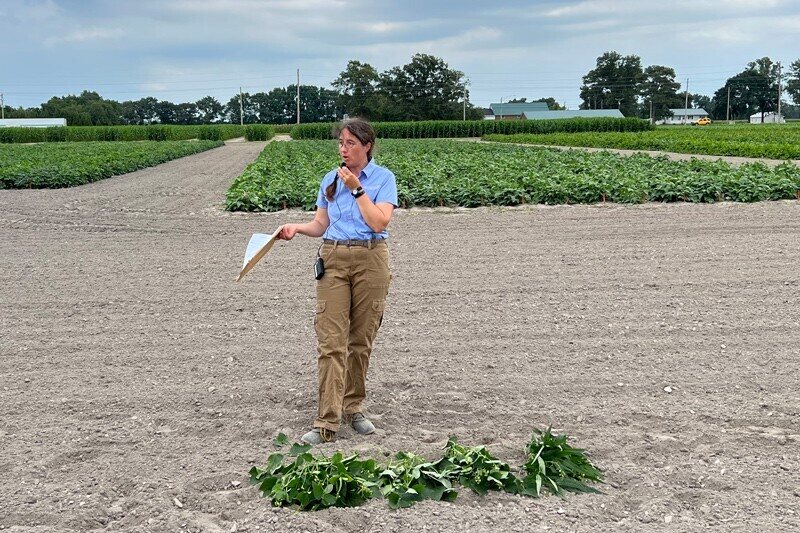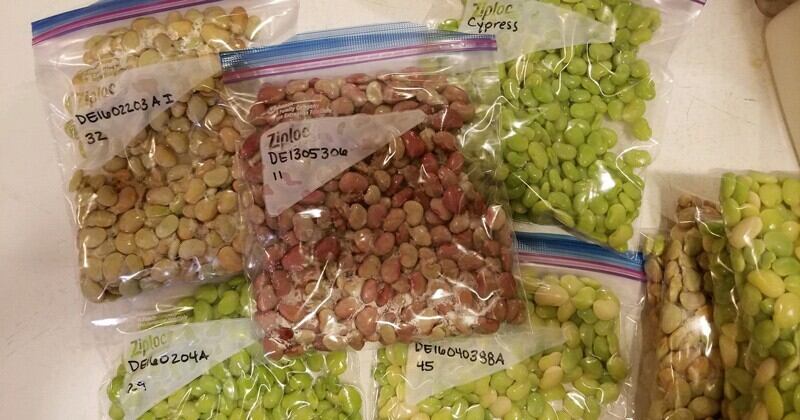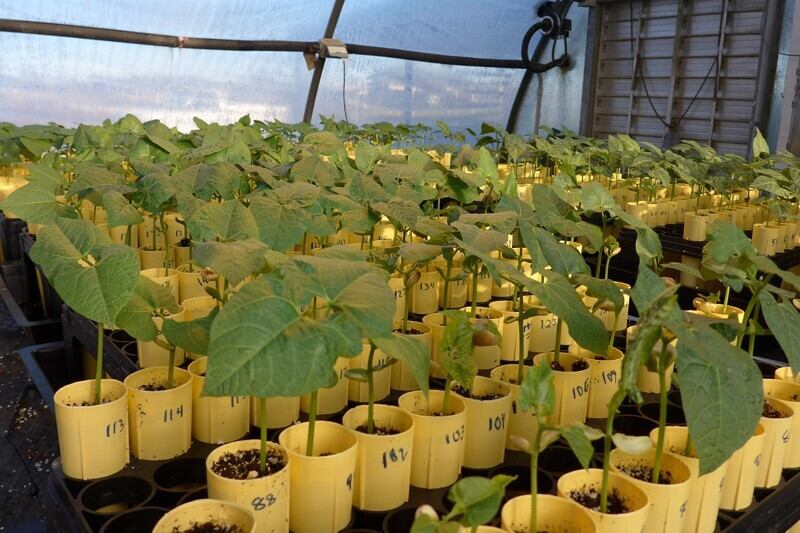
UD Cooperative Extension part of $3.3 million grant that aims to boost lima bean production and demand
Lima bean, butter bean, double bean, sieva bean: Whatever you call it, University of Delaware Cooperative Extension hopes you'll soon eat more.
Though often overlooked, limas are low in fat and high in fiber, protein, iron and other nutrients. Lima bean plants are also more heat-tolerant than their fellow legumes. This combination makes lima beans of interest to agriculture experts seeking to find nutritious vegetables that can adjust to changing climate and consumer demand.
A recent $3.3 million grant from the Specialty Crops Research Initiative supports a four-year study across seven institutions encompassing research on lima bean characteristics, cross-breeding, growing condition and stressor research, and consumer preference testing. Led by Emmalea Ernest, vegetable and fruit scientist and agriculture program leader, UD’s efforts will focus on drone-based phenotyping — collecting data on observable characteristics of lima bean plants.
Combined with research from the University of California, Davis, this data will give valuable insight into what makes certain varieties more efficient to grow in specific areas of the nation.
"The UC Davis group has developed some data analysis pipelines that allow them to look at plant height and architecture, which are two traits that I am interested in and that I've been selecting for visually," Ernest said.

The use of drones in this work is a large part of the project’s significance in Delaware. By taking aerial photos of the study’s plots, Ernest and other scientists can examine large fields much more efficiently and regularly than simply walking, which requires extensive time by a scientist trained in the visual rating framework. In addition to saving time and money, drone imagery brings the added benefit of revealing characteristics difficult to see at ground level. Height, sprawl and flowering patterns seen from a bird’s-eye view can indicate tolerance to heat, drought, humidity and other physical stressors. This data is important in understanding what traits might help lima beans grow well in new locations.
This work also includes developing lima bean plants that express traits ideal for production nationwide.
Antonia Palkovic, an associate specialist in the UC Davis Department of Plant Sciences, said, “Lima beans have improved heat tolerance compared to common beans, such as black, pink, pinto and Great Northern beans. This project gives us more resources for lima breeding to develop climate-resilient beans for future domestic production.”
That includes the development of varieties that will grow even better in Delaware.
“We are making crosses between adapted and unadapted varieties,” Ernest said. “So for Delaware, that’s taking green baby limas and Fordhook types and then crossing those lines with diverse material from other parts of the world.”

Lima beans are not native to North America. They were domesticated twice — once in Central America and again in the Andean Region of South America. As a result, many varieties thrive best at lower elevations, higher temperatures and higher humidity than other bean crops grown in the United States. Commonly grown in Delaware, the large-seeded Fordhook and pole types come from the Andean region; baby limas come from Central America. The study plots, located at the Carvel Research and Education Center in Georgetown, will be planted with test varieties selectively bred using these tropical lines of lima beans as parents.
“The year-round, near 12-hour day at lima bean’s centers of domestication means that tropical varieties are triggered to flower by short day length, which we do not have during our growing season here in Delaware,” Ernest said.
Termed “photoperiod sensitive,” varieties with this characteristic will grow just fine in Delaware but won't start flowering until the middle of September. As a result, North American production is often limited. Studies like those outlined in this grant aim to ease this limitation by creating breeding populations with traits that allow them to thrive in new locations, including Delaware.
Taste matters, too. Understanding consumer preferences is an integral part of the project, which will help breeders select lima beans that appeal to consumers. Grant partners at Delaware Valley University and Iowa State are working with taste experts to explore what flavors, textures and appearances consumers prefer in their lima beans. UC Davis is further exploring the nutritional aspects of different lima bean types and varieties.
The hope is that the combined research results in new lima bean varieties that produce excellent yields, resist pests, endure climatic stress and disease and are loved by consumers — part of the domino effect that will create demand for this underappreciated crop both nationwide and on the Delmarva Peninsula.
This $3.3 million grant is funded through The Specialty Crops Research Initiative (SCRI) of the United States Department of Agriculture’s National Institute of Food and Agriculture. The support will fund the project over four years, led by University of California, Davis. In addition to the University of Delaware, collaborators include University of California, Riverside; Iowa State; and Delaware Valley University.

